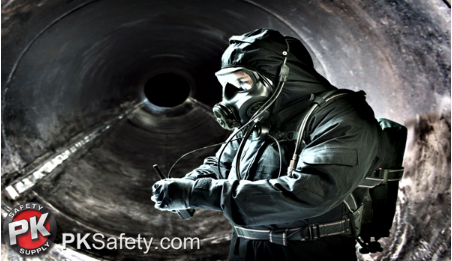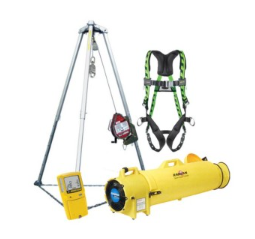
Confined Space Entry — Top 3 Safety Tips
When working in confined spaces, it’s critical that workers stay safe from hidden and potentially deadly dangers. These spaces - which, according to the U.S. Department of Labor’s Occupational Health...
Expert Guidance Monday-Friday, 6:30am-4pm PST. Call Now!

When working in confined spaces, it’s critical that workers stay safe from hidden and potentially deadly dangers. These spaces - which, according to the U.S. Department of Labor’s Occupational Health...

Be Careful in Confined Spaces Working in a confined space is dangerous because of the risks of asphyxiation from noxious fumes or dust, reduced oxygen levels, as well as fire...

While this confined space entry video is strictly about a rank beginner, the gear the confined space training facility at Texas A&M Engineering Extension Service (TEEX) uses is exactly the...

Construction welders regularly need to enter confined spaces in boilers, tanks, or pressure vessels to perform repairs or during the manufacturing process. Both MIG welding and TIG welding use inert...

When making a confined space entry, experienced teams know how important it is to have a reliable topside monitor. It's a critical part of both pre-entry and an "active-passive" monitoring...

When the oxygen content drops below 17%, but work has to go on, count on the PAS Lite SCBA system from Draeger. The PAS Lite is designed not just for...

Setting up a tripod can be a pain in the neck so it's gratifying to use a product like the French Creek 7' Tripod and 50' 3-Way Rescue Unit and...

Just because you aren't entering a drainage system, silo, septic tank, or some other confined space every day, or even every week, doesn't mean you can avoid getting the equipment...

If a workspace contains hazardous permit-required spaces, OSHA mandates the employer must inform exposed employees of their existence, location, and the hazards they pose. This can be done by posting...

We wanted to take a few minutes to talk about our Confined Space Entry Contractor’s Kit. This is perfect for folks doing occasional confined space work who don’t want to...

For effective communication, a message must be sent, received and understood. Sounds simple enough, but when working in a confined space with noise, machinery, and respiratory protective equipment in place,...

The sensors in your gas monitor work in different ways to keep you safe. Some wear out relatively quickly, while others could conceivably last forever. Here is a very quick...

Hydration is often a forgotten element of safety in a confined space. With so many potential hazards during confined space entry, loss of water because of sweating isn't high on...